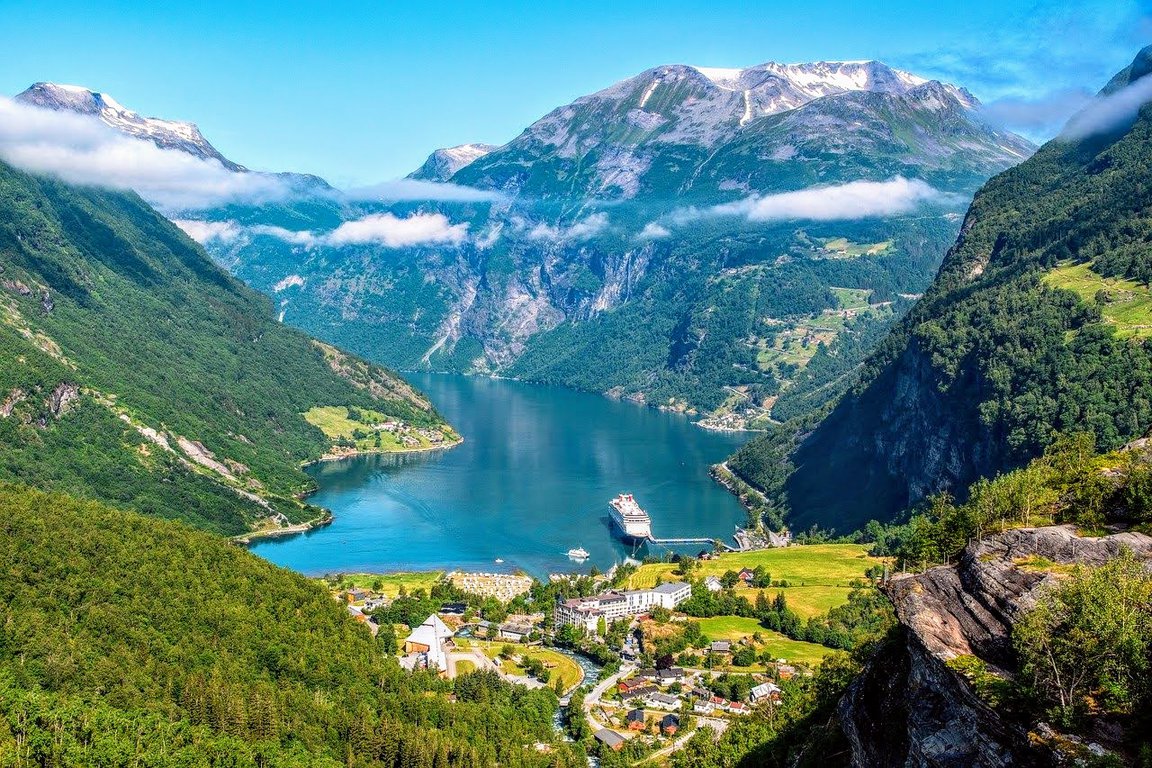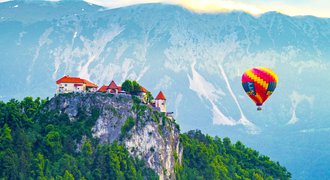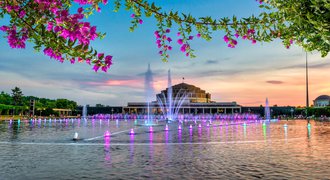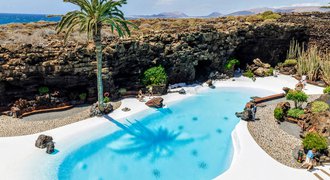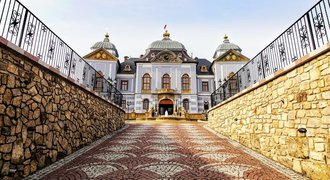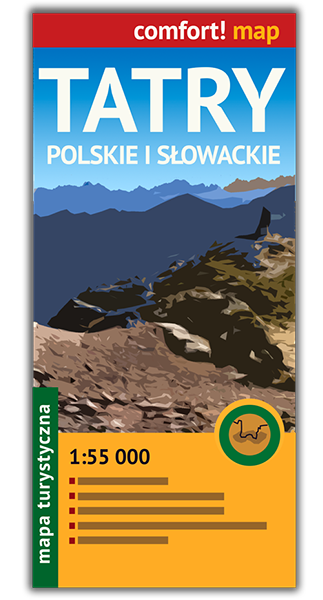Would you like to escape the crowds? Tired of the soaring prices in the popular European cities?
I've asked seasoned travel bloggers about their favourite travel destinations in Europe off the tourist trail.
And here's the list! Come on, let's discover Europe's hidden gems - charming towns, stunning landscapes, and unique experiences.
Hidden gems in Europe
✅ Before you discover beautiful hidden gems in Europe, check also a list of 18 underrated cities in Europe.
1. Chelva, Spain
Recommended by Linn of Brainy Backpackers
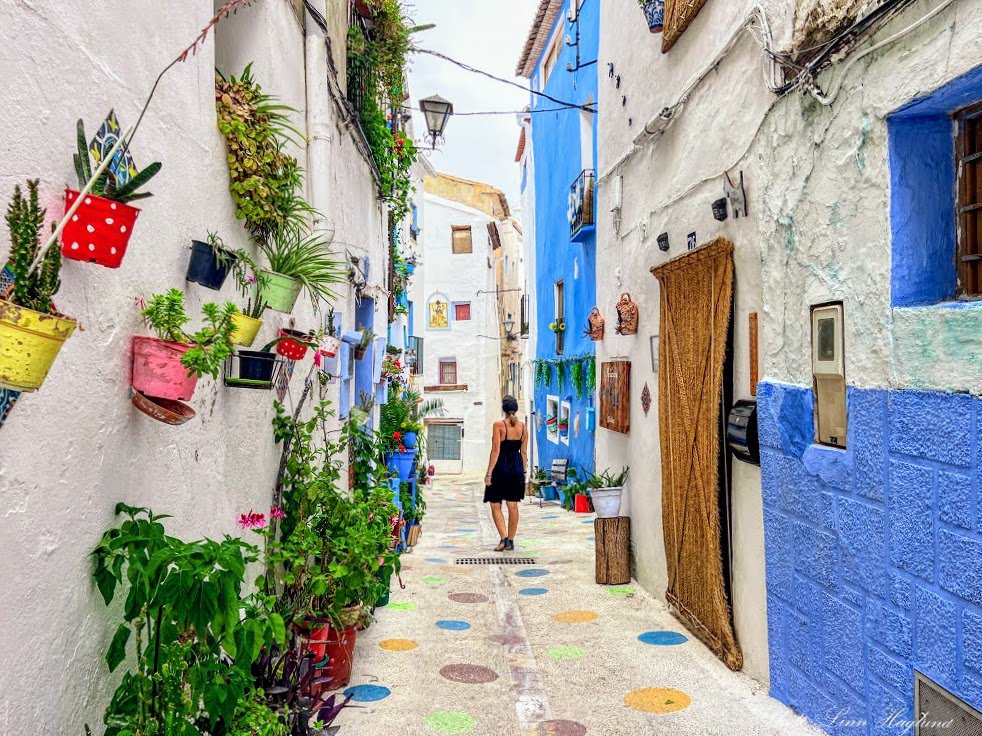
Chelva is a lovely hidden gem in Spain less than an hour’s drive from Valencia. The town has a long and intriguing history with an old Jewish quarter and two Moorish quarters which is quite uncommon for such a small destination.
But Chelva is also home to some of the most beautiful hikes in Valencia. The most exciting hike includes crossing a 1st century Roman aqueduct, Aqueducto de La Peña Cortada, and walking through tunnels in the cliff wall overlooking a stunning ravine. You can also walk the water route, Ruta del Agua, which takes you along the river and lovely swimming spots. On the way, you can see old cave dwellings which are believed to date back to prehistoric times and also used by the Moors.
Chelva was also the first town to get electricity in the area and you can see one of the three electricity stations along the river.
In Chelva town, the highlights are the Moorish and Jewish quarters, especially the old Mosque and the blue-painted streets covered in flowers and not to mention the ancient alleys with wooden beamed ceilings.
On the main square, you can take a look inside the main church, but it’s usually only open a couple of hours in the late afternoons.
Another interesting thing to do in Chelva is to follow the route of the washing places. This includes several historical washing places that were used for different purposes from cleaning animal skin to the clothes of the sick. There’s some history written next to each and the year of construction is marked on the washing place.
Visit Chelva if you're interested in off the beaten path Europe but I suggest to avoid it in summer, as it gets extremely hot. Spring, fall, and winter are all great times of the year to explore the town and the hiking routes.
For your stay choose Natura Apartments located close to the Chelva center. Guests are happy with well-equipped rooms, modern interiors and cleanliness.
2. Pelion Peninsula, Greece
Recommended by Annelies of Travelers & Dreamers
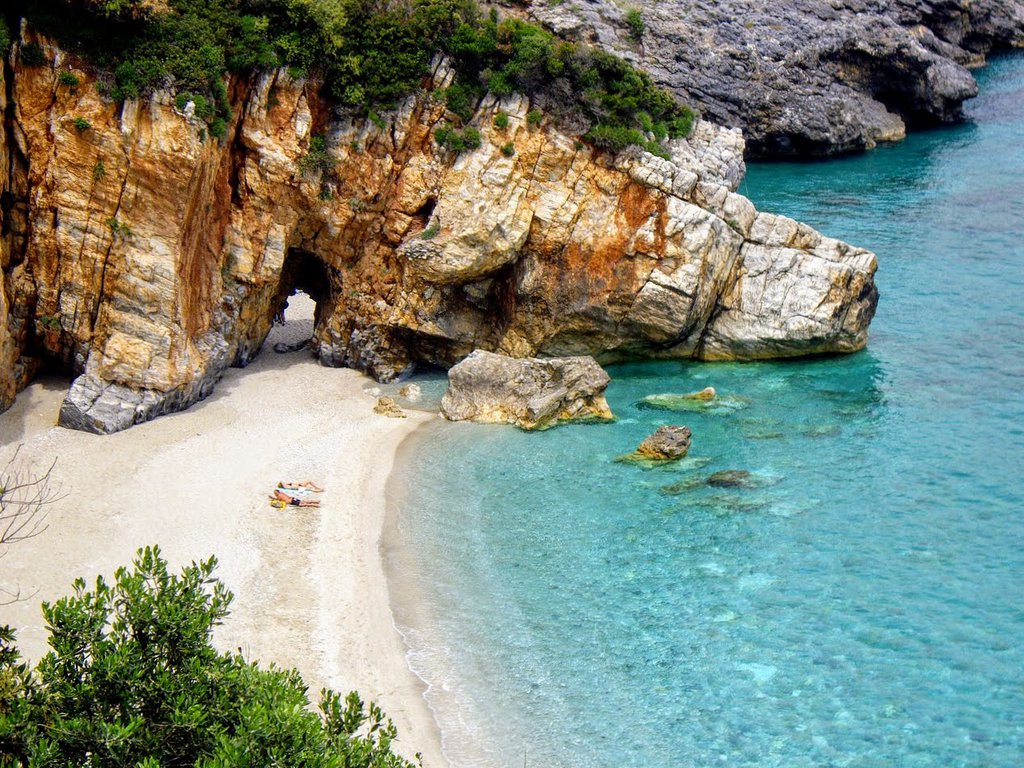
Pelion is one of the most scenic hidden gems in Europe. Pelion is a peninsula located on mainland Greece in the province of Thessaly. It consists of picturesque mountain villages, coves with crystal-clear water, lush forests, and beaches with a calm vibe. The views are dominated by Mount Pelion, a mountain that was, according to Greek legend, the home of the centaurs.
Pelion is not discovered by mass-tourism yet and that is what makes this destination so fantastic. In Pelion, you can still experience authentic Greek culture and some of the best food in the country. The best way to explore Pelion is on a self-drive road trip. The peninsula has so many hidden corners that it's impossible to discover them by public transport so having a car is an absolute must.
The best things to do in Pelion are enjoying the fantastic views over the Pagasetic Gulf from Makrinitsa, beach hopping on the eastern side of the island, especially around Fakistra Beach and Mylopotamos, and immerse yourself in small-town vibes at places like Damouchari and Chorefto.
The best places to eat on the peninsula are without a doubt Victoria Cafe in Damouchari which boasts a wonderful oceanside terrace. Furthermore, El Resto Bar in Mouresi is the perfect place if you are looking for a more upscale dining experience.
For your stay choose Damouchari Hotel located beachfront close to the town's centre. Guests are delighted with delicious food, lovely garden and friendly owners.
3. Luberon, France
Recommended by Leyla from Offbeat France

The Luberon region of Provence in France isn't exactly hidden, but you do have to go a bit off the beaten path to reach it. Its rolling hills, olive groves and lavender fields are characteristic here, as are the many hilltop villages that visitors fall in love with.
The following villages are all on the list of France's "most beautiful villages" and are great for travelling Europe off the beaten track.
One of the most scenic is the fortified village of Ménerbes, which people often first discover by reading "A Year in Provence" and other bestselling books by Englishman Peter Mayle.
Equally famous is Gordes, with its dry stone walls and its castle. Visitors make a beeline for its delightful Tuesday morning market, to buy local products, have a coffee admiring the valley, or simply to stroll around this photogenic village with their camera.
Roussillon looks nothing like the others. Once an ochre mining center, the colors have remained, the town's houses painted in near dream-line pastels. Lourmarin is further afield, over the mountains, and this is where you'll come to see the most fabulous Renaissance château in all Provence.
But my favorite is Bonnieux, which has a real "lived in" feel, a lively market, and panoramic views over the Luberon Valley towards the village of Lacoste, separated from it by lavender and olive farms.
What makes the Luberon a little "hidden" is that public transportation is nearly non-existent - you will need a car to visit, not only the villages, but to stop along the fields, mills and medieval ruins you'll find along the way.
For your stay in the Luberon region choose Hotel Le Clos du Buis in the village of Bonnieux. Guests are pleased with the stunning views from the windows, comfortable beds and tasty food.
4. Saltee Islands, Ireland
Recommended by Amber of Amber Everywhere
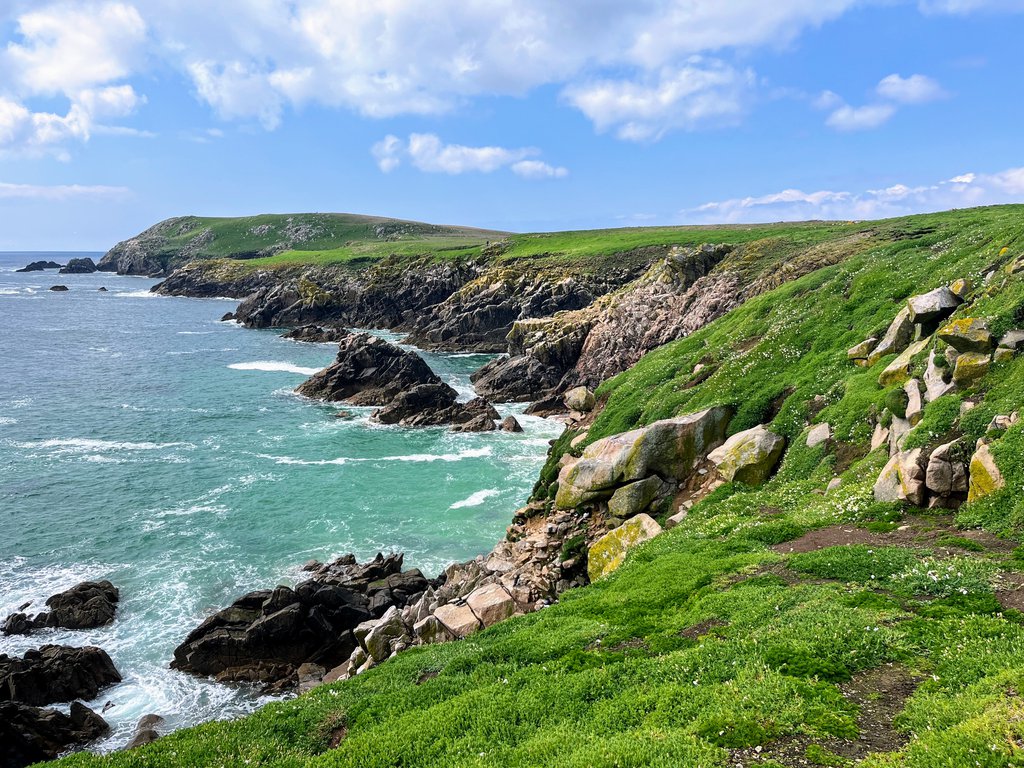
If you're looking for breathtaking hidden gems in Europe, visit the Saltee Islands. Located off the southeastern coast of County Wexford, are one of the best places to go birdwatching in Ireland. This pair of uninhabited islands, Great Saltee and Little Saltee, are a haven for over 220 species of seabirds, including puffins, gannets, and razorbills.
The Great Saltee can only be visited by a ferry from Kilmore Quay, so you’ll only have to share the island with a few dozen people at a time. This makes it perfect for spotting puffins and other birds in their natural habitat while catching views of the incredible stretches of coastline.
The Saltee Islands are popular with serious photographers, so you may see people using extra long lenses to capture the puffins and other birds. If you’re a more casual birdwatcher, bring binoculars so that you can see the birds clearly.
The ferries from Kilmore Quay run from April to September. To access the island, you’ll need to climb out of a small dinghy and walk through shallow water to get to shore. There are no amenities on the island and very little shelter, so be prepared with rain gear, snacks, and sunscreen for your time on the Great Saltee.
Before or after you explore the Great Saltee Island, you can enjoy a bit of time at Kilmore Quay. Enjoy a delicious cappuccino and breakfast at Cocoa's Coffee Shop & Kitchen and an ice cream cone from Lick'd while you’re in town.
For your stay choose the Quay House located very close to the harbour. Besides the convenient location, guests appraise spacious rooms, cleanliness and great views from the windows.
5. Sils Maria, Switzerland
Recommended by Michaela of Michaela Carrot
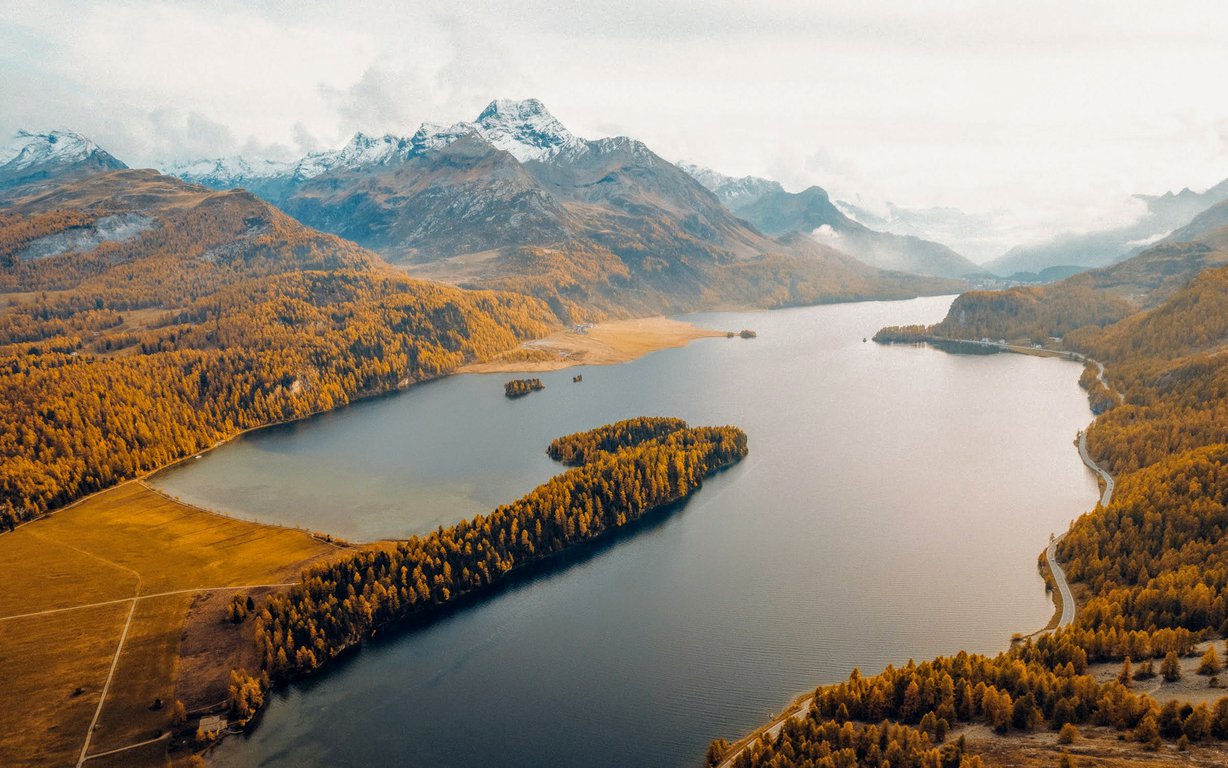
Sils Maria is nestled between Lake Sils and Lake Silvaplana in the Engadin Valley in Switzerland and is a destination where rich cultural heritage meets stunning natural beauty for outdoor adventures.
The village is a gateway to the Romansh culture, one of Switzerland’s four official languages. The Romansh influence is evident in the local architecture and customs. A visit to the Nietzsche House, where the philosopher found inspiration amidst the serene landscapes, provides cultural depth and a glimpse into the area’s intellectual history.
In summer, Sils Maria is a paradise for hikers. The trail to the Fex Valley offers breathtaking views of alpine meadows and snow-capped peaks. For those looking to take it easy, go for a leisurely walk around Lake Sils, with its mirror-like waters reflecting the surrounding mountains. My favourites are the autumn hikes among the golden larches in Engadin Valley which amaze with their golden color. It's one of those hidden gems in Europe which are especially beautiful in the autumn.
When winter blankets the village in snow, Sils Maria becomes a hub for winter sports. Skiing enthusiasts can enjoy access to the expansive Corvatsch ski area. Cross-country skiing is particularly popular here, with over 240 kilometers of perfectly groomed trails winding through the valley. For a more tranquil winter experience, the well-marked snowshoeing trails offer a peaceful way to explore the snowy landscapes in the Engadin Valley.
Dine at Hotel Waldhaus for a taste of history and fine cuisine, or enjoy authentic Engadin dishes at La Chüdera or Café Grond to refuel between your outdoor adventures.
For your stay in Sils Maria choose Hotel Chesa Randolina. Guests are pleased with a typical Engadine interior, amazing views and convenient location.
6. Leuven, Belgium
Recommended by May of Eat Cook Explore
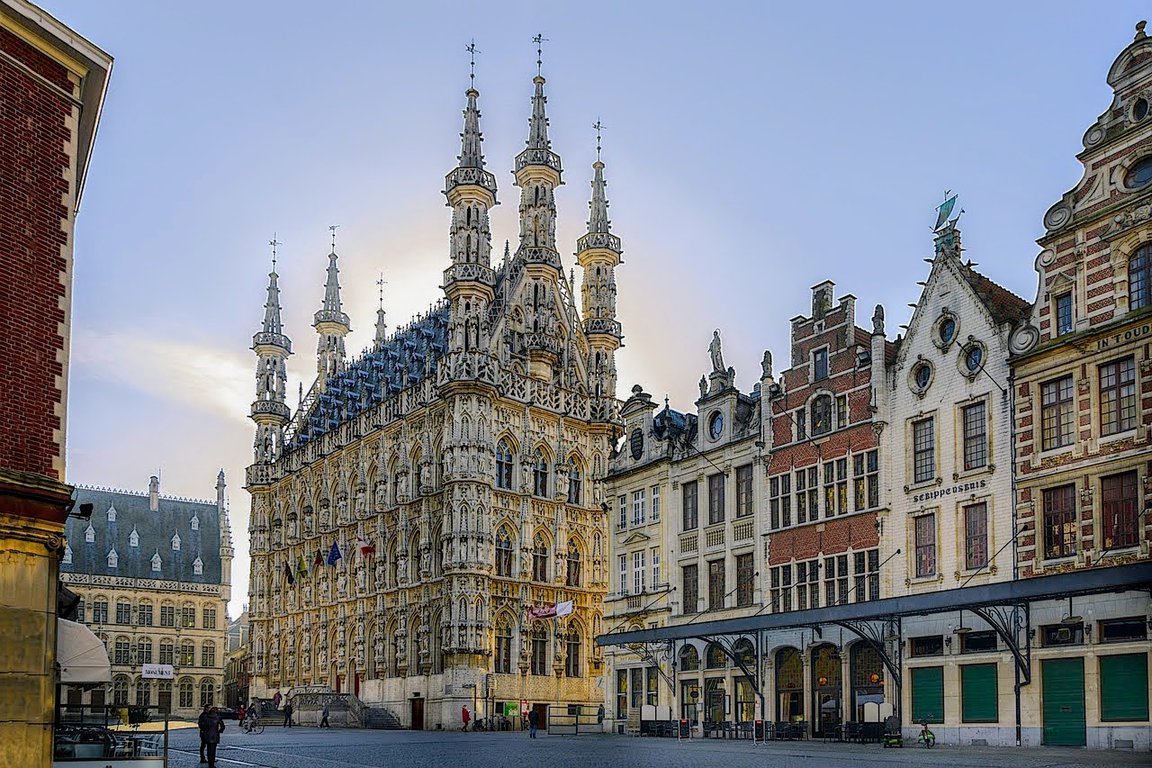
Leuven is Belgium's answer to Oxford. Just a short train ride away from Brussels, it's a great European weekend getaway.
Leuven being a university town, is very cycle-friendly. You can rent a bike from the station and explore the city via its cycle-friendly streets. Explore the streets, courtyards and gardens of the Grand Beguinage, a UNESCO World Heritage site. It began in the 13th century as a community for unmarried, semi-religious women. The area is now used as a residence by students and faculty of the university.
A short cycle ride out of town takes you to the 900 year old Park Abbey. This is now a museum with 17th-century art, an old church, park grounds and a working organic farm with sustainable farming practices. The lakeside restaurant, De Abdijmolen, is a lovely place for lunch.
In the centre of town, marvel at the stunning architecture of the Gothic Town Hall with a unique facade of 235 statues. Then visit Saint Peter’s Church opposite, which houses the famous Dieric Bouts triptych, "The Last Supper".
Beer lovers can tour the birthplace of Stella Artois. Innovative Belgian chefs have opened some terrific seasonal sustainable dining restaurants, with an emphasis on vegan fare like Noordoever in the trendy Vaartkom area.
If you'd like to explore Leuven attractions on a guided tour, check out this option.
For your stay in Leuven choose Hotel De Pastorij. It's conveniently located in the town's centre. Guests appreciate charming decor, spacious rooms and abundant breakfasts.
7. Gosausee, Austria
Recommended by Angie of We’re Not in Kansas Anymore
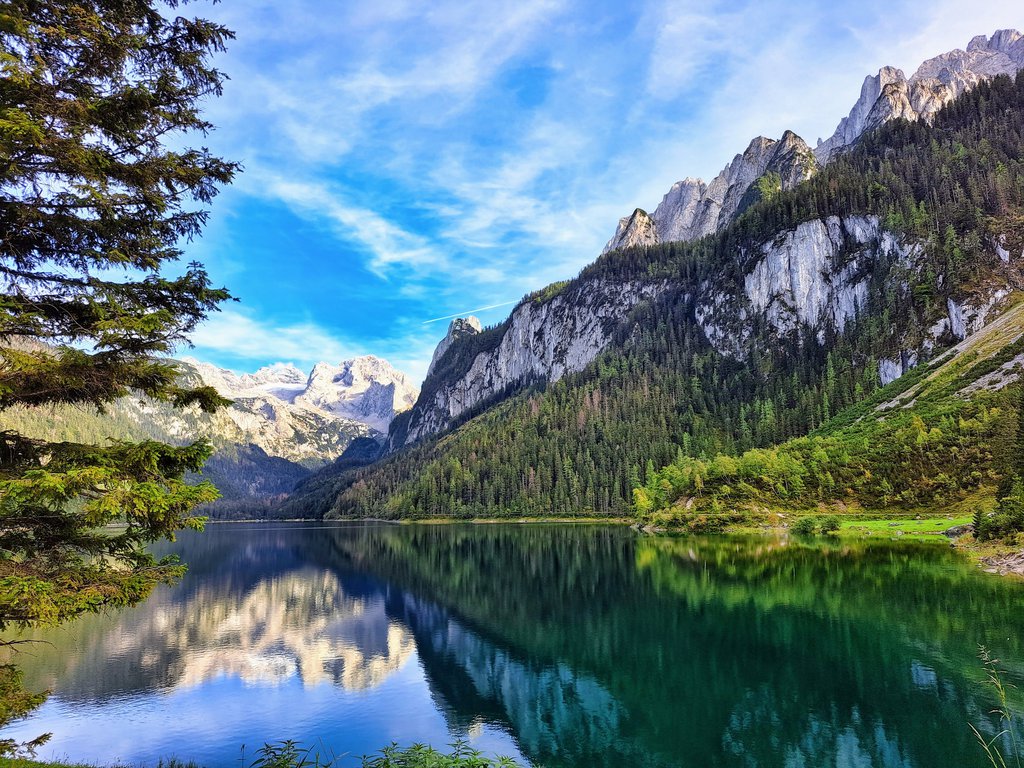
One of my favorite hidden gems in Europe sits just a few kilometers from one of Europe’s most popular tourist destinations. Beautiful Gosausee is a tiny emerald-green lake that sits in the shadow of the Dachstein mountain peaks in Austria. The scenery here is indescribably stunning but the lake is so much more than a quick pitstop for snapping some outstanding photos.
There are actually plenty of things to do at Gosausee lake to fill an afternoon or even an entire leisurely day! It’s my #1 tip for avoiding the midday crowds in Hallstatt, the popular Austrian tourist destination just down the road.
One of the top things to do at Gosausee is the scenic trail that encircles the lake, perfect for a leisurely stroll or a bike ride. Alpine lakes are generally cold but swimming or taking a rowboat out onto the lake are both options.
Another great adventure is to take a cable car ride to the top of the mountain. Cable cars whisk visitors up high above the lake for panoramic views. Additionally, visitors can rest, rejuvenate, and enjoy refreshments at the lakeside café.
For a truly relaxing experience, consider booking a room with a view at the hotel that sits on the lake. One of the best things about this destination is that there’s no car required. The bus stop's right at the lake.
For your stay over the Gosausee Lake choose Gasthof Gosausee. Besides the scenic location guests are delighted with comfortable rooms and tasty breakfasts.
8. Kivijärvi, Finland
Recommended by Erin of Travel From Australia
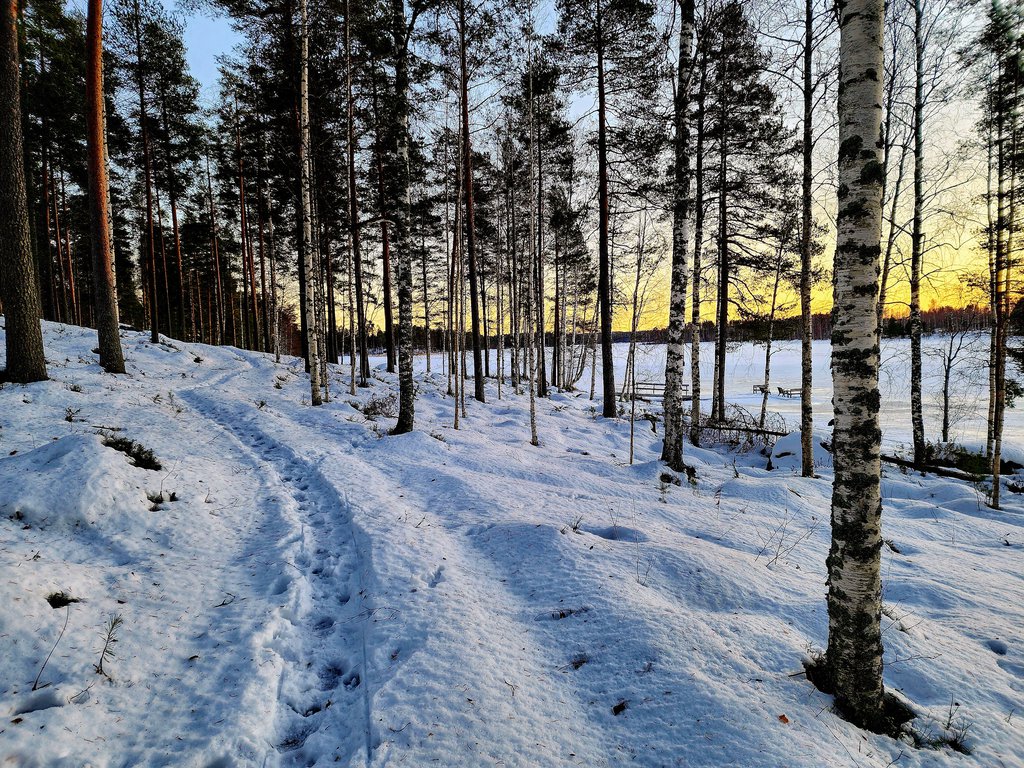
Kivijärvi is one of the many hidden gems of beautiful Finland. Located in central Finland, it is a haven for outdoor and nature lovers, as well as people looking to escape the busyness of life in bigger towns or cities.
It is a small village surrounded by magnificent forests and lakes, in particular Lake Kivijärvi. Nearby you’ll find the picturesque Salamajärvi National Park where you can get lost for hours on the many trails.
If you are looking for winter destinations in Europe, Kivijärvi might be just for you! It becomes a winter wonderland for snowshoeing, ice skating, sledding and cross country skiing. It is also perfect for admiring the spectacular Northern Lights.
In the warmer months, visitors and locals alike revel in water based activities including canoeing and swimming, as well as bird watching. Similar to most villages in Finland, fishing is a year round activity that is enjoyed by many! Year round, Kivijärvi is a photographers dream with such magnificent landscapes everywhere you look.
Although Kivijärvi itself is a very walkable town, you will be best to have your own hire car so that you can get around the local villages and get the most out of the region. If you are visiting in winter, make sure you take a snow sled and head over the back of the cross country skiing track to find the big sledding hill! There are hours of entertainment right there!
For your stay in Kivijärvi choose Kivijärven Linnanmäki Apartments. Guests are happy the the scenic location, cleanliness and super-friendly staff.
9. Sagres, Portugal
Recommended by Milene and Paul of Surf & Unwind
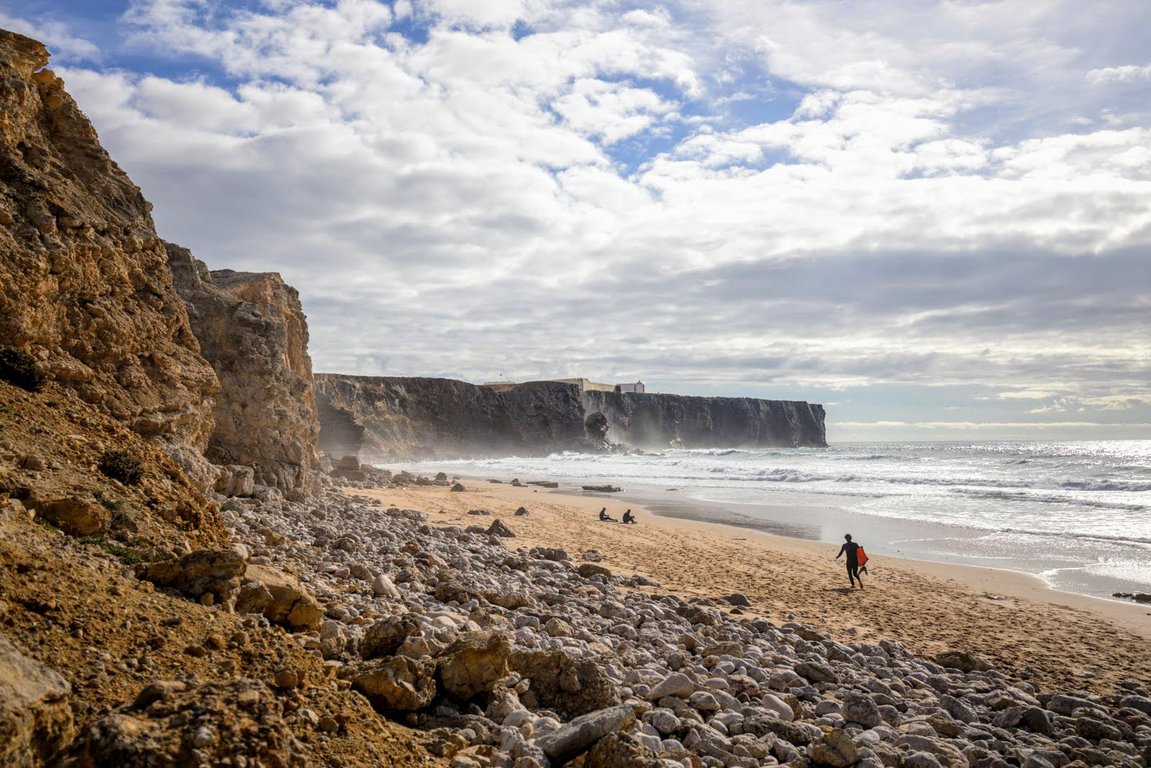
Sagres is a picturesque coastal town that sits on the South West tip of Portugal overlooking the Atlantic Ocean. It's a perfect travel destination if you'd like to explore off the beaten track Europe.
Surrounded by dramatic cliffs and unspoiled beaches, it’s Sagres’ jaw-dropping natural sights that make it worth a visit.
Whether you hop on a boat to snorkel around Martinhal Islets’ caves and grottoes to discover the local underwater wildlife or head to Cape St. Vincent’s towering cliffs for the most unforgettable sunsets, you will be nothing short of amazed.
And because of its privileged peninsular position, some of Sagres beaches like Mareta Beach are ideal for sunbathing while others are perfect for water sports like surfing, windsurfing or kitesurfing.
But if soaking in a bit of history is what you like, Sagres Fortress holds a museum about Portugal’s rich maritime history. Located on a narrow headland, this impressive construction was built in the 15th century and played a major role in the country’s naval exploration and defense. After your museum visit, don’t forget to wander around its winding paths, exploring its ancient walls and taking in the stunning scenery.
For nature enthusiast there's the stunning Sagres Natural Park. It's a coastal area known for its dramatic cliffs and historical significance. The park has iconic landmarks such as Cape St. Vincent and Sagres Point, once believed to be the edge of the known world. It's a popular destination for birdwatching, hiking, and exploring the rich maritime heritage associated with the Age of Discovery.
Since no visit is complete without sampling the local cuisine, Mar à Vista on Martinhal beach serves delicious traditional Portuguese food and, not far from there, The Hangout is the place to go for drinks and homemade pizza and burgers.
For your stay choose Casa Azul Sagres. Guests appreciate modern and spacious rooms, and convenient location close to the beach and the center.
10. Isle of Iona, Scotland
Recommended by Carmen of Basic Economy B
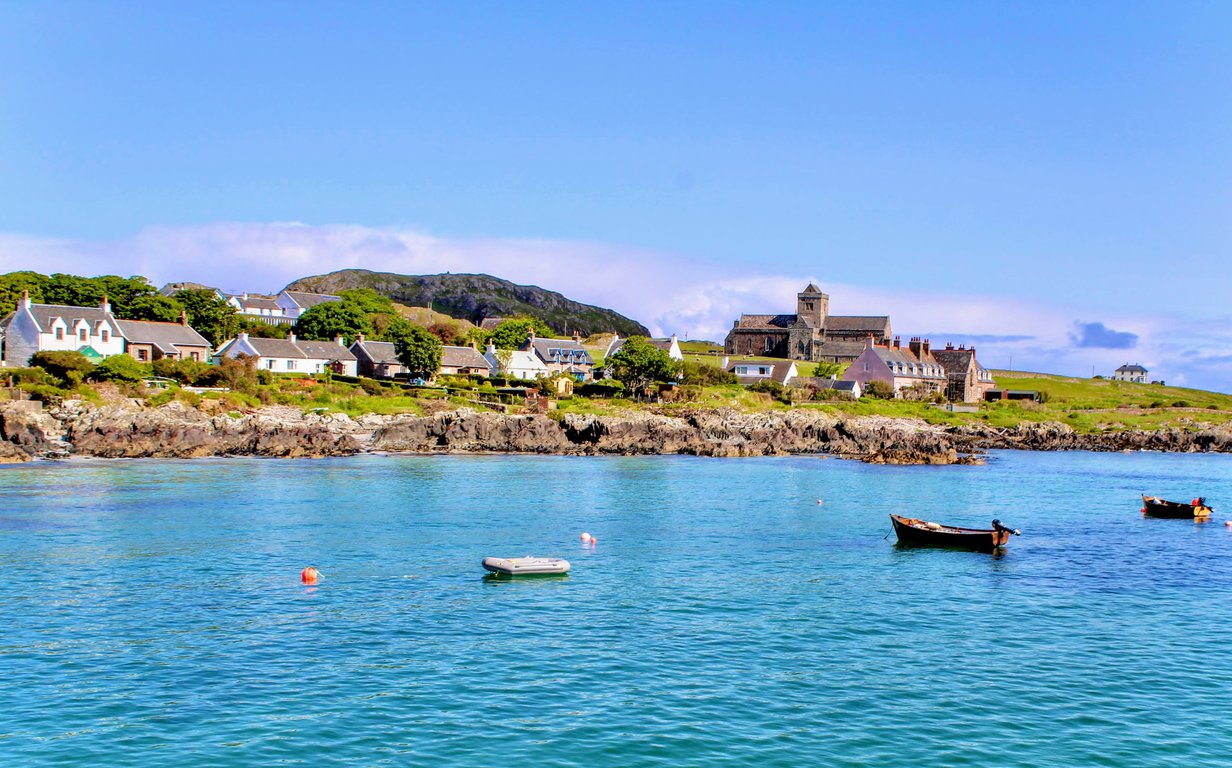
The Isle of Iona, located off the west coast of Scotland, is one of the most awe-inspiring hidden gems in Europe. It is a serene and historic destination renowned for its natural beauty and spiritual significance. The tiny island is famous for being one of the earliest centers of Christianity in Scotland, as St. Columba arrived in 563 AD and established a monastery.
Though Iona is really small (3 miles long by 1.5 miles wide), it features spectacular landscapes with its sandy beaches and crystal-clear waters.
On Iona, the ancient Iona Abbey is a must-see, known for its stunning medieval architecture, spiritual heritage, and amazingly well preserved Celtic crosses. While there, I also recommend walking across the island to St. Columba's Bay, where tradition holds that St. Columba first set foot, and enjoying the beautiful, quiet beach.
Given the island's small size, dining options are somewhat limited. I recommend visiting the Columba Hotel’s dining room, where you can enjoy traditional Scottish fare and local seafood while taking in stunning views of the bay. If you're just on Iona for the day and need a lunch spot, the Iona Café is a great option as well.
If you enjoy gazing at the stars, the Isle of Iona is a must-visit. There is a mesmerising clear night sky!
The best time to visit Iona is during the summer months where the weather will be milder. Be sure to check ferry schedules in advance, as service can be limited and ferries may be canceled in rough seas. It’s also wise to have a backup plan. Book your accommodations early, as options are quite limited on this small island.
For your stay on the island choose the Iona Pods. Guests are delighted with amazing scenery, cozy decor and kind staff.
11. Alta, Norway
Recommended by Megan of Tromsø Trip
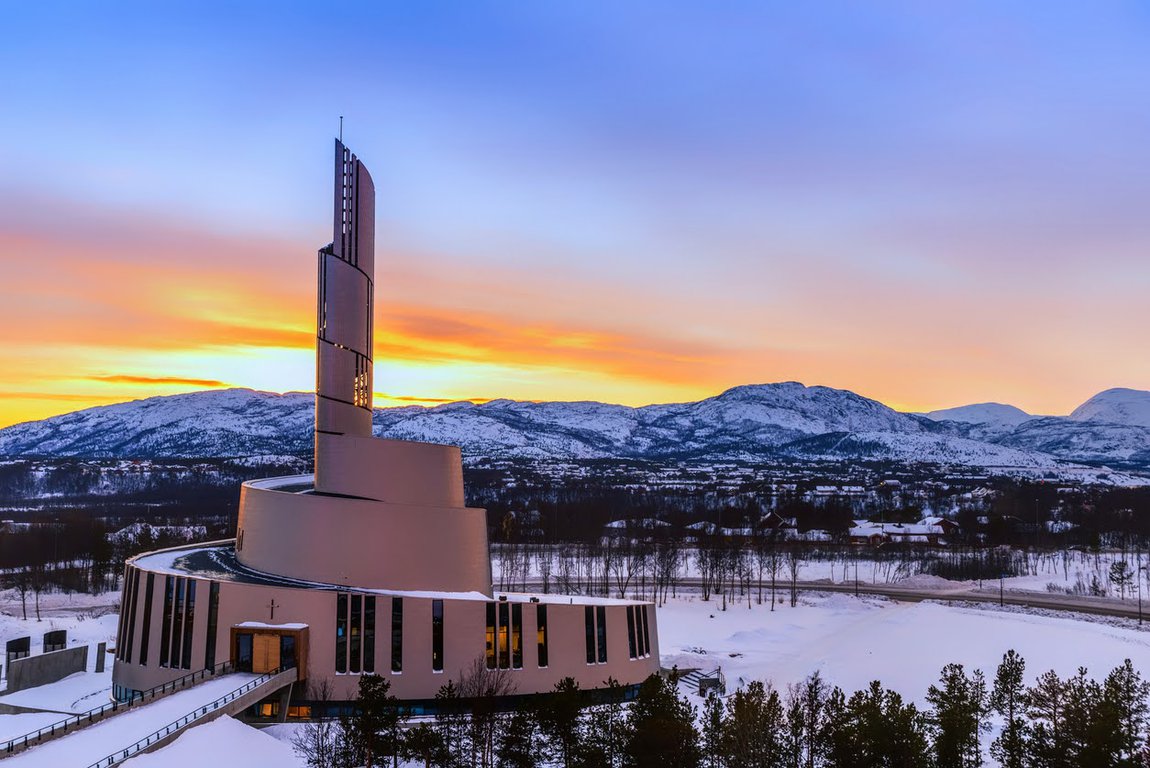
One of the best places to visit in Scandinavia during the winter months is Alta, Norway. While Alta is often forgotten about because it is situated not too far from Tromsø, it is worth a trip on its own if you are looking to escape the crowds but still have a wintery trip to the north!
Alta is located in Arctic Norway and is a stop on the Hurtigruten route that goes up the Norwegian coast. The best way to get there is to fly (there are flights from Oslo, Tromsø, and a few other places) and rent a car at the airport. While Alta is beautiful year-round, it is known to be an incredible winter destination due to its heavy snow and activities planned around it. It is also a great place to see the northern lights! If you compare Alta to Tromsø, it has almost just as much to do in terms of activities.
When visiting Alta, it is a must to visit Sorrisniva, the world's northernmost snow and igloo hotel. You can stay overnight in one of the themed rooms or simply visit on a self-guided tour. Sorrisniva also has an Arctic Wilderness Lodge that you can stay in if the ice hotel is not for you.
For a winter adventure embark on a snowmobile safari across the Finnmarksvidda mountain plateau and experience the freedom of the Arctic wilderness with an expert guide.
No trip to Alta is complete without a dog-sledding excursion. Two renowned places with ethical tours are Trasti & Trine and Holmen Husky. After a dog-sledding adventure, be sure to stop at Sami Siida to learn about the local Indigenous population and to try some of their traditional foods at their on-site restaurant. Be sure to stop by the Alta Museum before leaving town; the small museum is located outside the city center and showcases ancient rock carvings from the Sami.
There are not a plethora of food options in Alta, but some of the top places to eat are Erica's Mat og Vinbar (city center), Sami Siida (outside the city), and Trasti & Trine (also outside the city and offering a delicious fine-dining experience).
If you prefer to stay close to the Alta's center choose Thon Hotel. Guests appraise nice views from the windows, comfortable rooms and abundant breakfasts.
12. Kiruna, Sweden
Recommended by Ed of Arctic Travel Tips
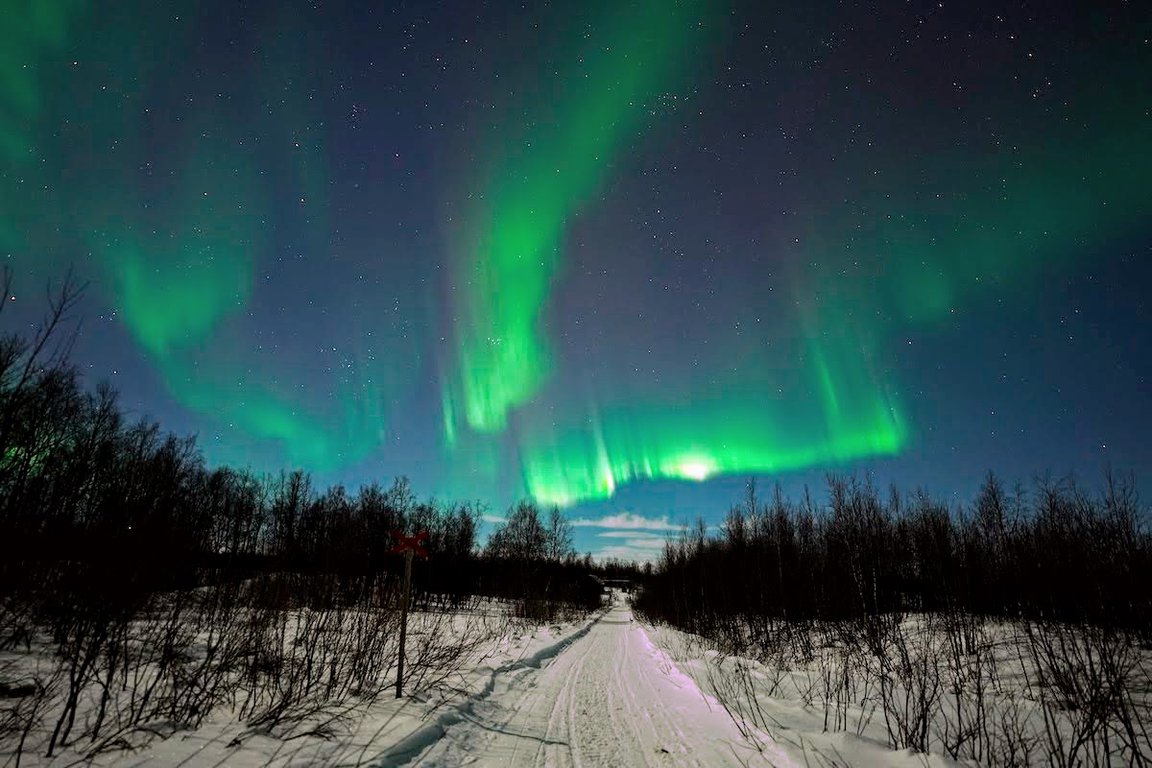
One of the best winter destinations in Europe is the city of Kiruna in northern Sweden. Located 145 km (90 mi) north of the Arctic Circle, the city has a lot to offer for those wishing to experience life in the Arctic.
The wilderness surrounding Kiruna in winter is perfect for those wanting to go dog sledding, snowmobiling, or snowshoeing. However, the biggest draw to the region is the chance to see the northern lights dancing in the sky above from September until April.
While the city may largely be focused on the outdoor lifestyle, there is a burgeoning culinary scene. The restaurant at Camp Ripan is one of the best places to try elevated Nordic cuisine, with an affordable five-course tasting menu available. Alternatively, Stejk Street Food is the best place for a quick and filling lunch (I recommend the Arctic cheese steak sub). This humble street food van proudly boasts the honor of being Sweden's best-rated restaurant on Google.
If your main objective is to see the northern lights, then I recommend visiting in the fall, during the low season when prices are lower but the aurora tends to be more active. During this period, there is no snow, but you can still experience the frigid temperatures of the Arctic by visiting the Ice Hotel in Jukkasjarvi and its permanent year-round ice rooms.
Be sure to also visit the Kiruna Church, which is one of the largest wooden buildings in Sweden.
If you prefer to stay in a more traditional place, choose Camp Ripan. Guests appreciate the super-friendly staff, modern spa facilities and delicious meals.
13. Kravice Falls, Bosnia and Herzegovina
Recommended by Taylor of Taytrum Travels
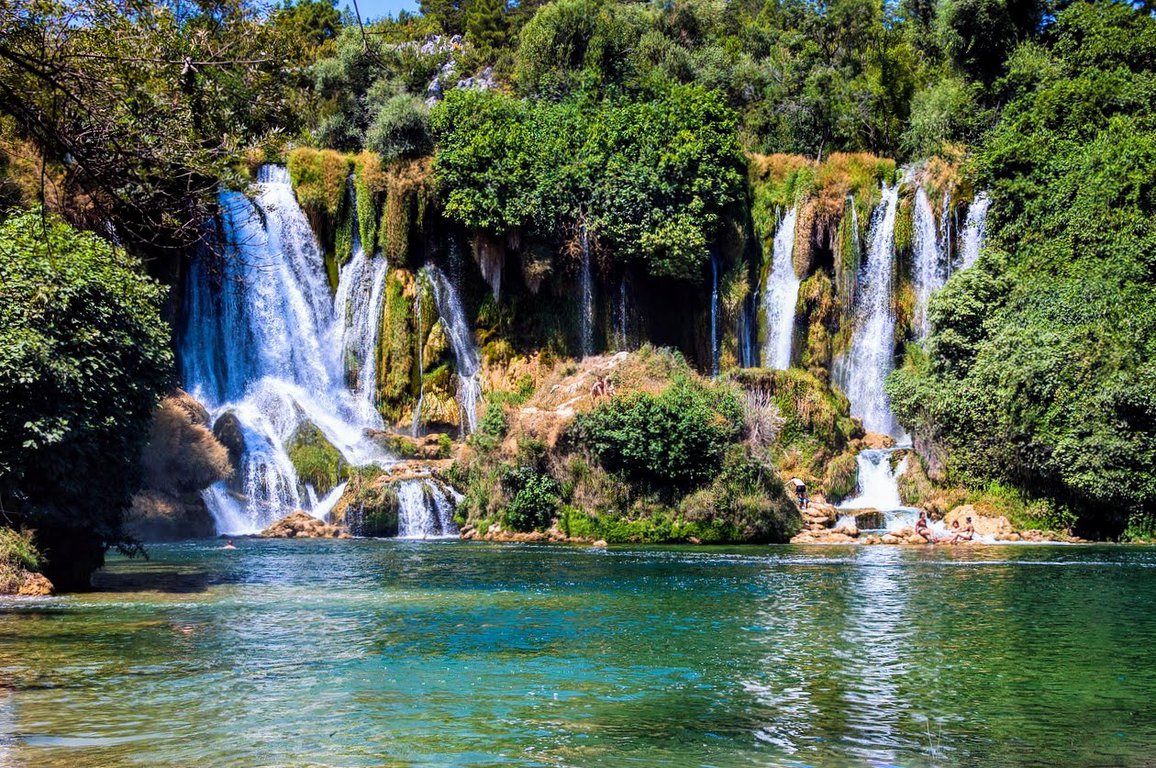
Kravice Falls is found in Bosnia and Herzegovina, in the Balkans. It is best known for being a cool natural pool to swim in during the hot summers in the country.
The waterfalls around the rockface provide a pretty epic backdrop. Krka National Park and Plitvice National Park in Croatia may be its more famous cousins, but Kravice is a fun, easy-going natural landmark in the Balkans well worth your time. Because it is a hidden gem among most international tourists, it doesn’t have the crowding issues of the more popular waterfall parks in the area. Plus, it is much cheaper to visit.
You can get to the Kravice Falls most easily from Mostar city, where it is only 40 kilometers (25 miles) away. You can also make it a day trip from Dubrovnik, 130 kilometers (81 miles) away. To get to Kravice Waterfalls it is easiest to hire a taxi, join an organized tour group, or rent your own car.
On your way to or from Kravice, be sure to stop by the Blagaj Monastery, located atop the Buna River and at the base of a stark cliff.
There is a small entrance fee to the waterfalls, with the cost fluctuating depending on the season. In the summer, it is about 6 euros. You can find snack bars and a few basic restaurants near and in the park.
Once in the park, the best thing to do is swim and relax. I recommend coming prepared with your swimsuit already on, but there are bathrooms and changing stations if you need them.
If you'd like to stay close to the Kravice Falls, choose Hotel Bigeste. It's located in the picturesque Ljubuški town. Guests are happy with tasty breakfasts, modern amenities and comfortable rooms.
14. Amelia, Italy
Recommended by Larch of The Silver Nomad
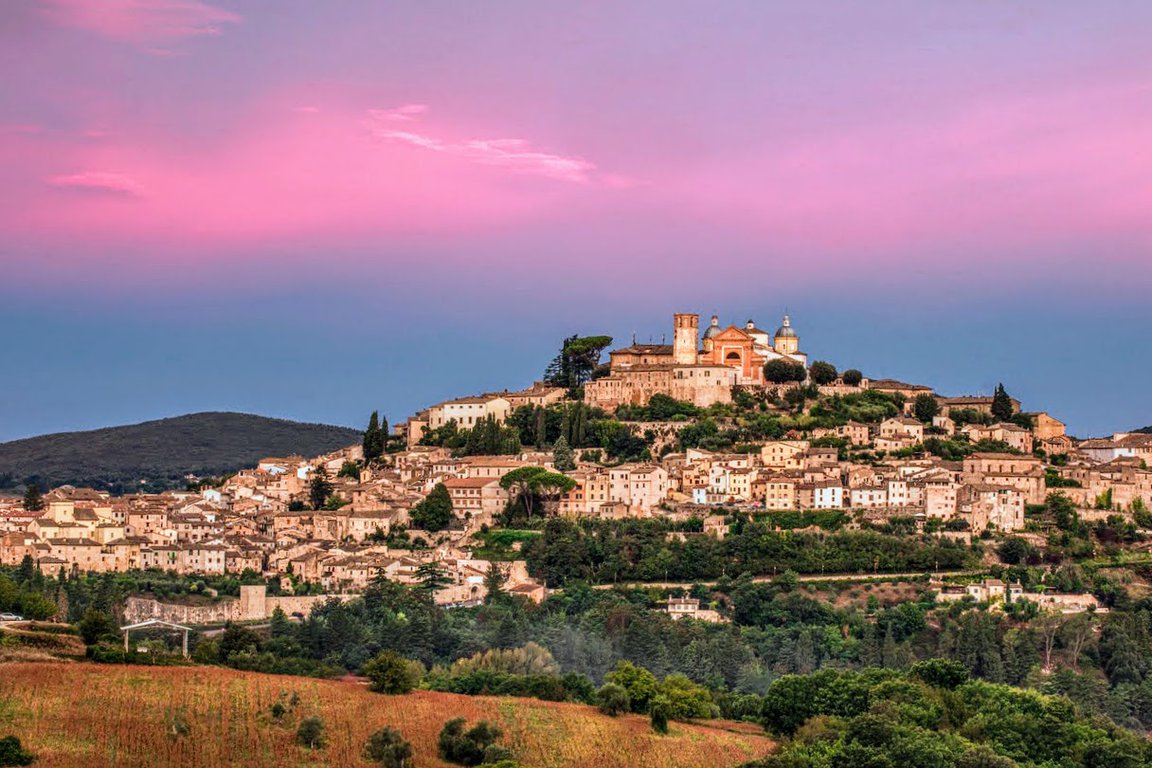
The walled town of Amelia in south of Umbria sits quietly on a hill surrounded by rolling countryside. It's among the most unique places to visit in Europe! Amelia’s history stretches back 3,000 years when it was known as “Ameria”.
Leave your car in the car park and either walk up the streets or take one of the lifts up the side walls to get higher up in the town.
The Civic Archaeological Museum and Art Gallery is filled with artifacts and mosaics detailing the history of the town. One of the most interesting exhibits is the 2-metre-tall bronze statue of Germanicus which was found in a ditch outside the gates.
An unusual place to visit is The Roman Cistern under the Piazza Matteotti at the top of the town. These massive cisterns were used to collect rainwater and were built in the first century B.C.
Amelia is beautiful to visit all year around, but is particularly pleasant in the cooler months during spring and autumn.
There are many places to eat and drink. With beautiful views over the surrounding countryside Il Baronetto restaurant serves traditional local dishes including a hearty stew of wild boar.
Just opposite Porta Romana outside the town walls is Il Chicco D'Oro Amelia. With seating inside and outside, it is great for a quick coffee, cornetto (croissant) or one of the freshly made pizza slices.
Do bear in mind that many of the shops close for lunch during the afternoon.
Staying in Amelia is a good idea because no only will you enjoy quiet and slow life atmosphere but also it's a great place for discovering the region of Umbria.
For your stay choose Casale Santa Caterina. Guests are content with the well-equipped apartments, an outdoor swimming pool and a super-friendly owner.
15. Škofja loka, Slovenia
Recommended by Džangir of Dr Jam Travels
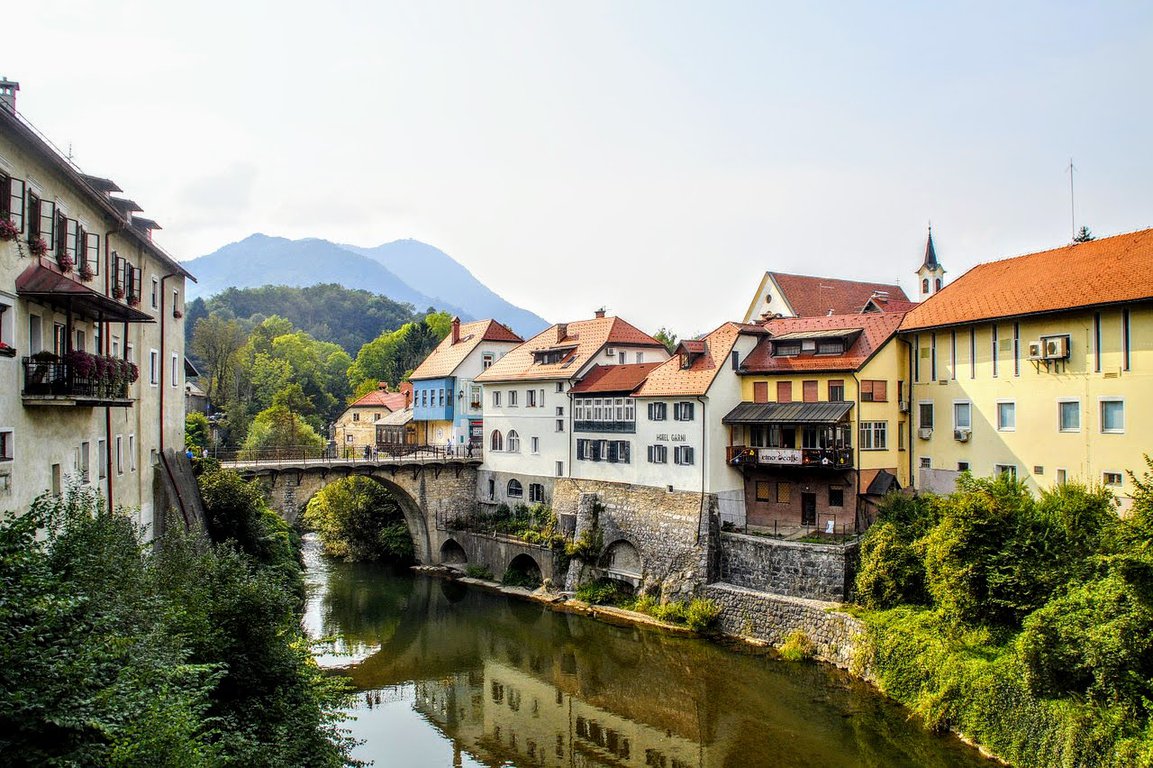
Travelers visiting Slovenia usually stop in the capital Ljubljana, the coastal town Piran, or the alpine lake Bled. But they miss many of the jewels this country has to offer. One of those is Škofja loka.
It's a charming medieval town from the 10th century renowned for its well-preserved medieval architecture and picturesque setting on the Selška Sora river. Škofja loka is located in Upper Carniola at the confluence of rivers Poljanska Sora and Selška Sora.
It's an ideal destination for those seeking a tranquil escape with a touch of history and culture. Its compact size makes it easily walkable.
Below the Old Town, you have 3 parking lots and a bus station. The train station is 2.5 km away. I would suggest entering the Old Town over the Hat Bridge (out of 5 bridges) onto Lower Square (Lonca). Here you will see the big building Granary (Kašča), which is now adapted into a restaurant offering traditional cuisine dishes.
On the higher terrace, you will find the Town square (Plac) with a Marian column, an Old Town Hall, a Homan house and at the end St Jacob's church (the best example of Gothic architecture in Slovenia). On a terrace above you will find Loka Castle which houses a museum.
The Škofja Loka Passion Play, dating back to 1721, is a unique Slovenian tradition where locals reenact scenes from the Bible, particularly focusing on the life and Passion of Christ. Performed every six years, this grand procession involves hundreds of participants and features elaborate costumes, live music, and moving stages. The Škofja Loka Passion Play is part of UNESCO Heritage.
I also suggest visiting Cappuchin Bridge. There's a Nepomuk statue and city coat of arms with a black man wearing a crown. Nearby you'll also find the Cappuchin Monastery with a library containing 30.000 old and rare books.
For your stay in Škofja loka choose Hotel Zamorc located in the center. Guests appreciate beautiful interior, lovely garden and tasty breakfasts.
16. Košice, Slovakia
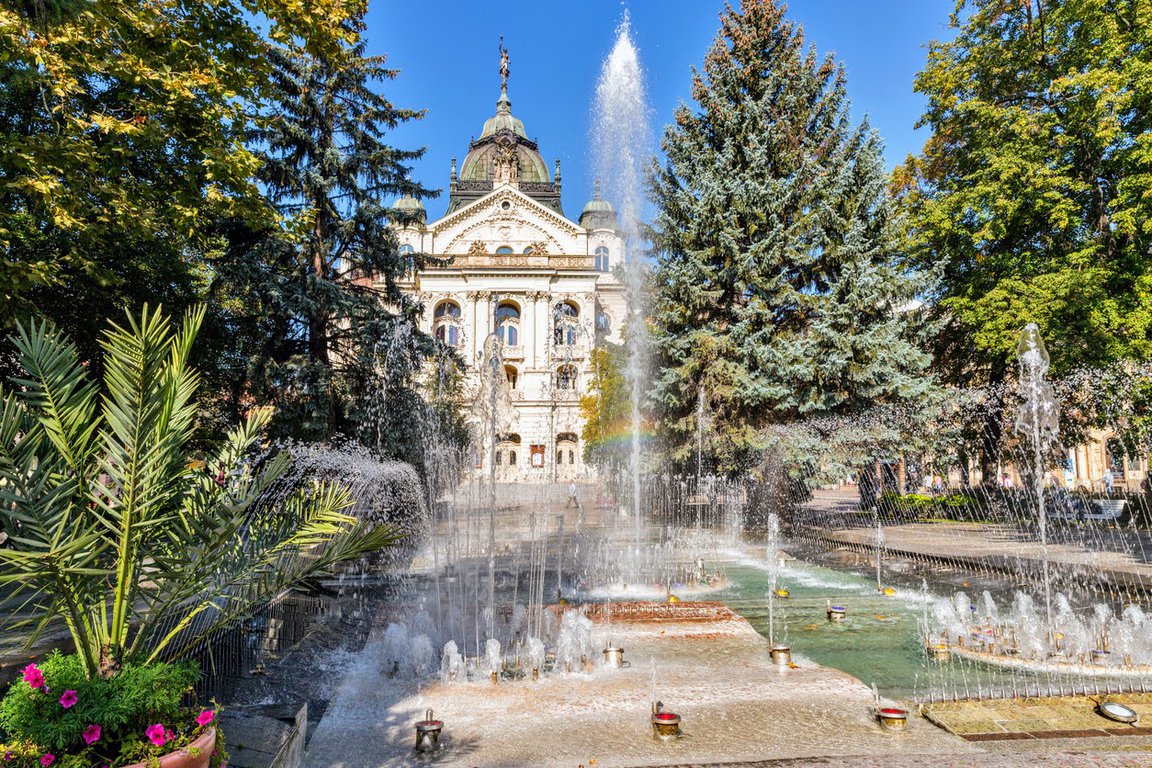
The second largest city in Slovakia isn't typically on the tourist radar, known mainly for its nearby steelworks. But that's a misconception. Košice has a charming old town, a vibrant atmosphere, and unique culinary experiences.
Walking through Košice's center is a delight, with colorful townhouses lining Hlavná Street, Slovakia's longest promenade. St. Elizabeth's Cathedral, one of the city's largest landmarks, houses the crypt of Rákóczi, a famous Hungarian figure.
This cathedral also holds the title of Slovakia's largest religious building. An interesting legend surrounds a gargoyle above the main entrance. It depicts the wife of one of the cathedral's creators, whose love for alcohol led her husband to immortalize her "witch-like" behavior for all to see.
Climbing the cathedral's Sigismund Tower offers panoramic city views. Nearby, a fountain surrounded by greenery puts on a music and light show in the evenings. The city park provides tranquility with its greenery and another fountain.
Košice holds a unique treasure: in the 1930s, renovations uncovered a can containing over 2,900 gold coins from various countries, along with medals and a chain. This Košice Gold Treasure is now displayed in a safe at the East Slovak Museum.
Another highlight of this underrated Slovak city is Kulturpark, hosting exhibitions, concerts, film screenings, and even an ice rink. The former swimming pool is now Kunsthalle, an art gallery. Kulturfabrik Tabačka, once a tobacco factory, now houses a cultural center with cinema, concert halls, and a bistro.
Finally, Košice has one of the world's oldest restaurants, Hostinec. Here, you can enjoy traditional Slovak cuisine and locally brewed beer.
For more information about places to visit in Slovakia, check our travel guide.
For your stay choose Boutique Hotel Slávia located in the Košice Old Town. Guests are content with lovely rooms, tasty breakfast and friendly staff.
17. Lammerklamm, Austria
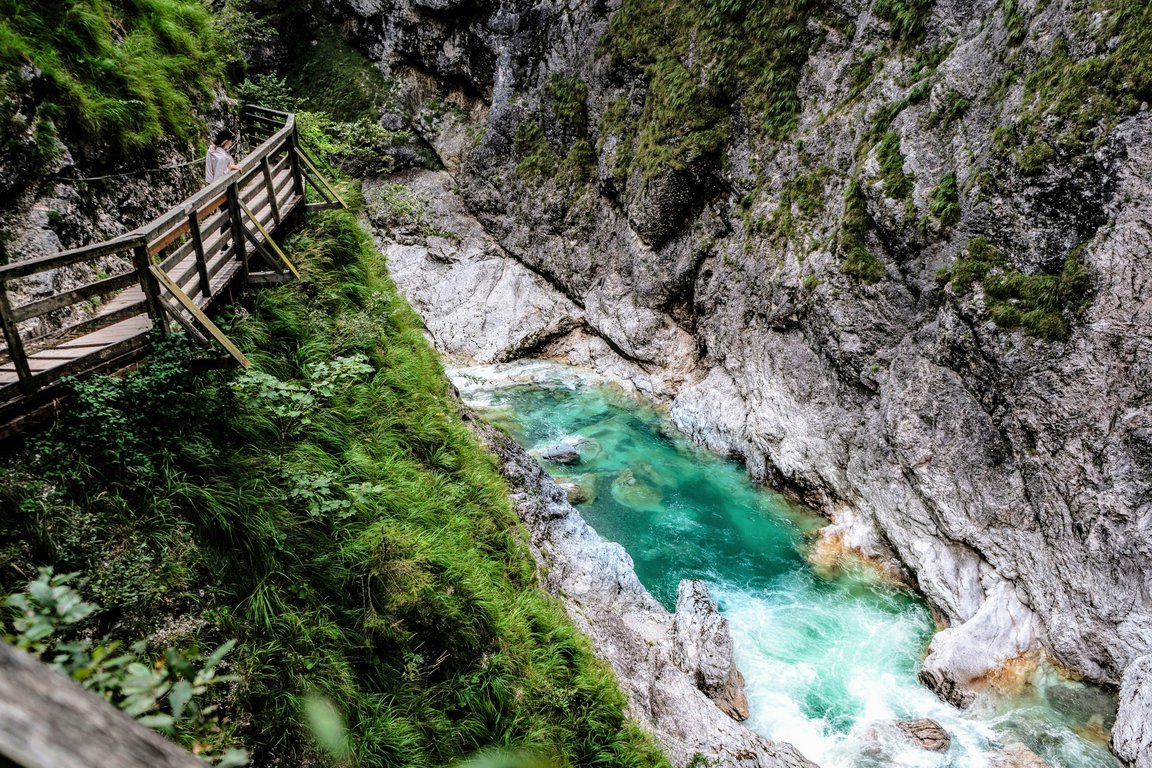
Lammerklamm Gorge, found in the Salzburgerland region, is a standout among Austria's gorges and one of the most impressive hidden gems in Europe. Its magnificent rock formations and the fast-flowing Lammer River are a sight to see for visitors of all ages. This is a great place for an active family trip, combining the excitement of discovery with a bit of adventure. The hike through the gorge is easy, a pleasant walk along the river using many wooden walkways and bridges.
Unlike other gorges, there are no tight squeezes here. The river has created a wide space between the rocky walls. Kayaking trips are sometimes offered, but they depend on good weather.
Lammerklamm is a testament to nature's power. It was formed by melting glaciers during the Ice Age, thousands of years ago. The melting ice carved out this narrow gorge with steep cliffs. It's one of the most beautiful natural spots in Salzburgerland.
A highlight is the "Dark Gorge," where the water has cut deep into the rock, and the cliffs almost touch. It's very close to the entrance, but you need to go down some steep steps to reach it. It's best to visit this spot at the end of your hike, on your way back.
The hike ends with crossing the "High Bridge." From 30 meters above the water, you get amazing views of the Tennengebirge mountains. You can see the whole gorge from here. After crossing the bridge, take the steps down to the other side of the river to reach the official end of the gorge.
If you're driving, there's a parking lot near the entrance to Lammerklamm. It's free and there are also free, clean restrooms.
On rainy days, the walkways can get very slippery, so be careful.
The gorge has a unique microclimate, meaning it can be colder inside than outside. Bring a light jacket or sweater, especially if you're going early or late in the day.
Remember to wear comfortable hiking shoes and clothes for the weather. Pack snacks and water. Also, check the gorge's opening hours before you go.
For more information about places to visit in Austria, check our travel guide.
For your stay choose Hotel Goldener Stern in a picturesque mountain town of Abtenau. It's located just a 10-minute drive from the Lammerklamm Gorge. Guests are delighted with comfortable beds, scenic views and delicious breakfasts.
Other beautiful places in Europe
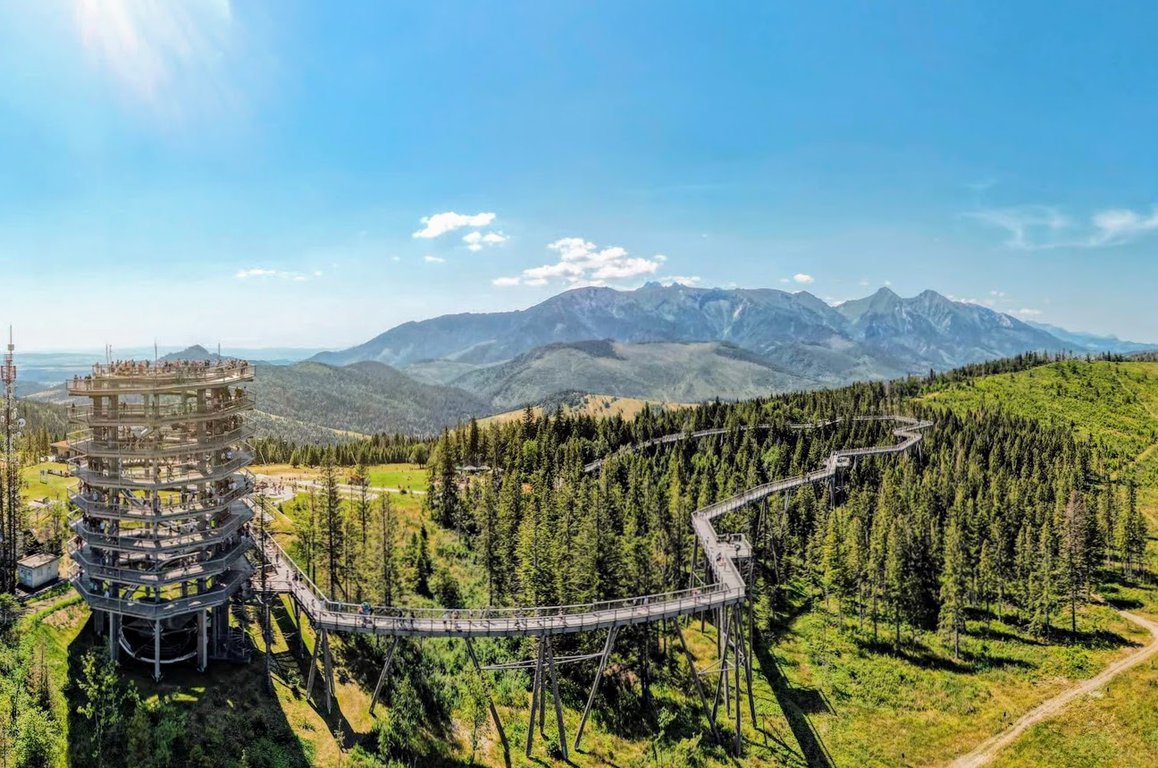
Europe offers incredible natural beauty - soaring mountains, peaceful lakes, wild coastlines, and ancient forests. With so many amazing places, planning your trip can feel overwhelming.
Kickstart your European adventure with these stunning destinations - they showcase the best of the continent's natural wonders:
✅ 14 spa towns in Europe to visit if you need relax and rejuvenation
✅ 13 most beautiful mountain resorts in Europe
I wish you an amazing time discovering the idyllic hidden gems in Europe 🧡

